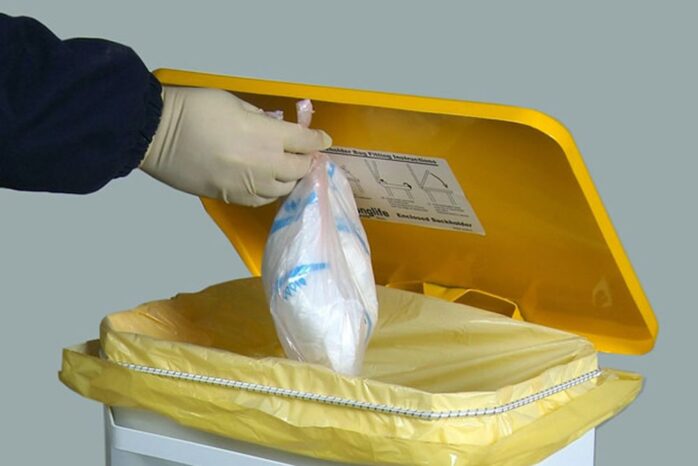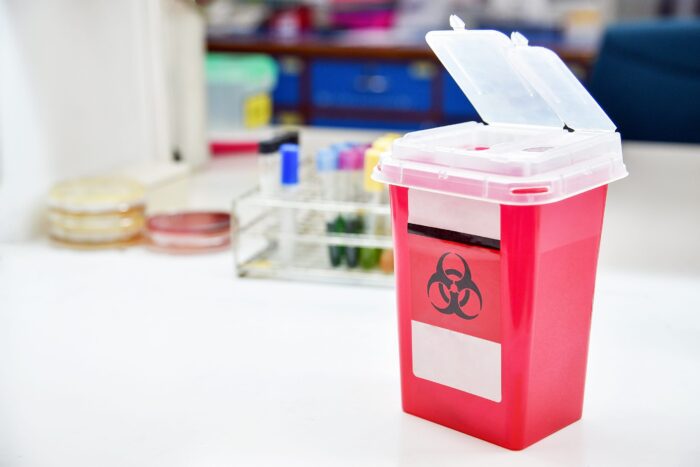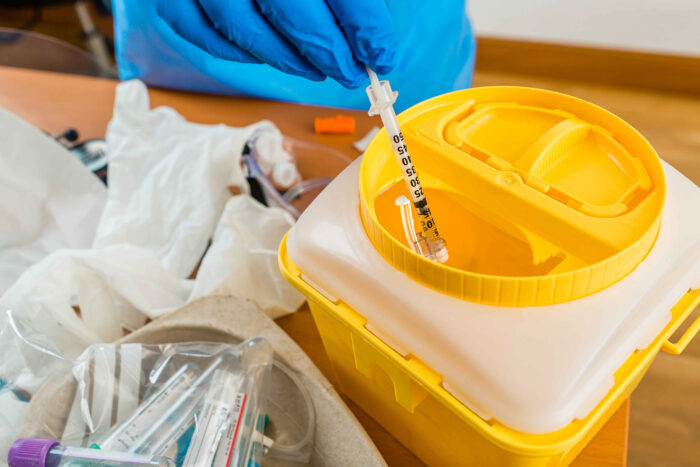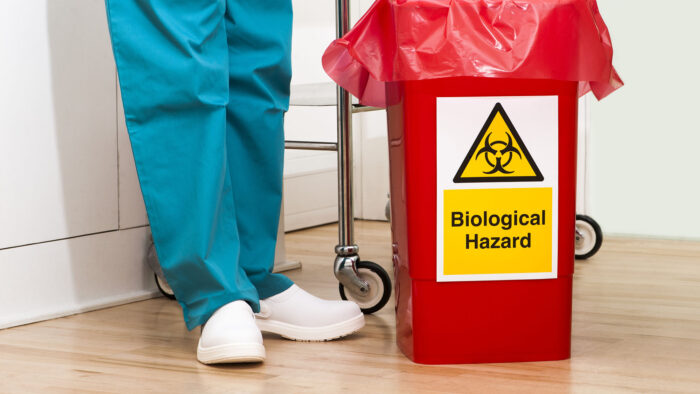
Have you ever thought about what happens to your medical waste? Clinical waste disposal is a vitally important process that affects us all. From hospitals to the home, find out what clinical waste is and how it’s disposed of in this blog!
Clinical waste disposal is a process that safely removes and disposes of biomedical waste, which is any form of hazardous materials generated during the diagnosis, treatment and immunization of humans or animals. It can include such items as laboratory samples, pharmaceuticals, sharps (needles/syringes), body parts and biological liquids. Proper handling and disposal of these types of medical wastes reduces the risk to healthcare workers and the general public from exposure to hazardous materials.
The clinical waste disposal process begins with careful segregation. All medical wastes such as discarded sharps or medical instruments should be segregated into different categories for proper disposal. This helps ensure that these items are only disposed of in accordance with applicable regulations and guidelines established by federal, state and local authorities. After segregation has taken place, most items are transported to approved facilities that specialize in clinical waste disposal services.
Types of Clinical Waste
- Source: choicemedwaste.com
Clinical waste is generated by health care activities such as patient care, diagnosis and laboratory testing. Disposal of this type of waste poses a considerable environmental risk if not handled correctly. It can be classified into four main hazard categories; infectious, cytotoxic, radioactive and sharps.
Infectious: consists of materials that are likely to spread infections and includes items such as used needles, swabs or dressings.
Cytotoxic: includes medicines and chemotherapy drugs that have expired or been discarded after use in patient treatments.
Radioactive: includes materials contaminated with radioactivity such as isotopes used in imaging tests or other treatments.
Sharps: consists of items that can potentially cause a puncture wound such as scalpels and syringes with needles still attached.
Clinical Waste Disposal Methods
- Source: ecosteryl.com
It is of paramount importance for the safety of patients, visitors and staff. Clinical waste includes items that have been used in the diagnosis, treatment or immunization of humans or animals, including human or animal parts and body fluids. It must be disposed of in a safe and hygienic manner in order to minimize contamination and injury to people who may come into contact with it. There are several accepted methods for disposing it, depending on the type of material being disposed, which include:
-Incineration: Incineration is one of the most common methods used for disposing of clinical waste. It involves burning it at high temperatures to reduce its volume and minimizing potential risks associated with storing large quantities of infectious materials.
-Steam Sterilization: This method uses steam heat to sterilize any medical equipment that has been contaminated with biological materials such as blood or bodily fluids. The steam breaks down all contaminants into harmless gas and liquid form so that it can easily be disposed of safely without risking infection or disease transmission.
-Autoclaving: Autoclaving uses hot water (or steam) plus pressure to sterilize medical instruments contaminated by patients’ bodily fluids. The autoclave runs a cycle which rapidly heats to a pre-set temperature (130C), begins steaming after that temperature is reached, then cools down until all liquids have been properly treated using disinfectants.
–Chemical Disinfection: In chemical disinfection a specific chemical (usually chlorine based) is used to kill off any bacteria present in it before being sent off site for disposal at approved facilities such as landfills.
-Encapsulation/Containment: This method involves disposing hazardous wastes inside airtight containers made from corrosion resistant steel material ensuring they stay away from human contact until they can reach their final destination.
Depending on an organization’s needs and local regulations on clinical waste management, these methods may vary according to best practices relevant in each particular case; however all aim at providing a safe environment when dealing with hazardous substances by making sure that no harm comes from improper handling of medical materials.
The Future of Clinical Waste Disposal
- Source: suez.co.uk
As the healthcare industry continues to evolve, so too does the manner in which clinical waste is managed and disposed of. The future of clinical waste disposal is one that involves constant innovation and new approaches. As technology advances and research progresses, more efficient solutions for clinical waste management emerge.
Innovative solutions for clinical waste management are available that use high-tech methods to help streamline the process. For example, you can find companies providing robotic systems through which hazardous medical waste can be processed more quickly and efficiently than traditional methods employed in the past. Advanced technologies also make it simpler to monitor each step of the process, including sorting, insulating, sterilizing and storing materials securely before they are ultimately disposed of.
Additionally, advanced devices such as sharps containers are being used to enable safe handling of needles and other sharp objects by separating them from biohazardous materials without any risk of contamination or injury for personnel or bystanders during transportation or final disposal stages. This ensures that pertinent procedures are followed properly each time thereby avoiding any unpleasant situations.
Furthermore, more hospitals are jumping on board with modernized methods such as autoclaving hazardous materials before disposal; an approach that uses intense heat processes to reduce infectious pathogens into harmless material which can then be thrown away safely with regular non-infectious trash collection services. In essence, these practices allow reducing human exposure risks when disposing of medical sharps or other hazardous materials while guaranteeing complete destruction of microbes found on such items before ultimate sending to landfills.
Conclusion
While it may seem that clinical waste is a difficult and potentially hazardous problem to manage, by following the appropriate regulations and procedures, waste disposal can be made simpler and more efficient. Generally, clinical waste should be segregated based on its type, bagged securely and labelled in accordance with legal requirements.
It is best dealt with through defined healthcare instruments such as incineration or autoclaving before being disposed of in a manner approved by local regulatory bodies. By adhering to best practices and established guidelines, organisations can efficiently manage their clinical waste while ensuring safety and compliance to help maintain a healthy environment.














